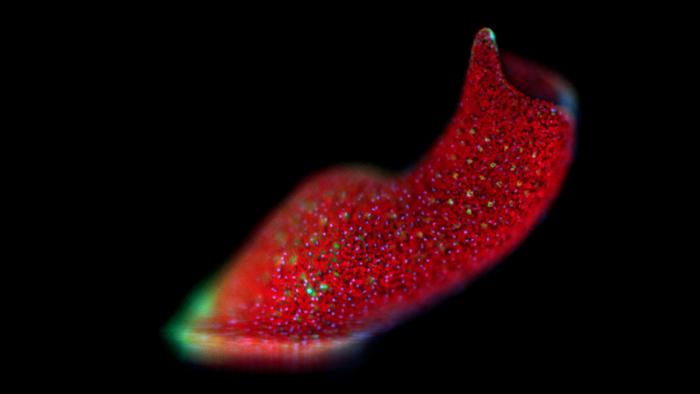3D Genome Architecture Influences Sperm Development, New Study Reveals
Recent groundbreaking research has emerged, illuminating the intricate organization of DNA within cells, particularly in the context of sperm cell development. Two pivotal studies, published in Nature Structural and Molecular Biology, have utilized advanced techniques to reveal how the cellular architecture of DNA is not just a chaotic mass but a meticulously organized structure that […]


Recent groundbreaking research has emerged, illuminating the intricate organization of DNA within cells, particularly in the context of sperm cell development. Two pivotal studies, published in Nature Structural and Molecular Biology, have utilized advanced techniques to reveal how the cellular architecture of DNA is not just a chaotic mass but a meticulously organized structure that governs gene coordination. This research has relevance not only for understanding fertility but also for offering insights into developmental disorders that occur when such processes go awry.
At the heart of these studies lies an investigation into the three-dimensional (3D) structure of the genome. Satoshi Namekawa, a professor of microbiology and molecular genetics at the University of California, Davis, emphasizes that understanding this 3D configuration is crucial for grasping how genes are regulated during the formation of different cell types, including sperm and eggs. His team’s research sheds light on the complex looping and folding of DNA within living cells, a phenomenon that allows genes positioned far apart in the linear DNA sequence to interact closely with regulatory elements known as enhancers.
The journey of germ cells in an embryo is particularly fascinating and critical for reproductive biology. These primordial germ cells possess a unique potential known as bipotency, meaning they can ultimately differentiate into either sperm or eggs. Yet, this potential is not static; as the embryo develops, these cells undergo a crucial commitment to one lineage or the other—a process that is irrevocable once established. This differentiation highlights a fascinating aspect of cellular identity: the so-called “memory” possessed by cells, which determines their fate. The current research endeavors to unravel the mechanisms underlying this cellular memory and how it impacts the decision-making process for germ cells.
To gain deeper insights into the spatial organization of the genome, Namekawa and his colleagues implemented a cutting-edge technique known as Hi-C, which enables researchers to analyze chromatin interactions at a remarkable level of detail. Through this method, they were able to identify the physical proximity of genomic regions that are crucial for gene regulation during sperm cell development, revealing a layered complexity to how DNA manages its structural configuration.
Among their findings, the researchers identified two specific proteins that play pivotal roles in establishing and maintaining this cellular memory. The first, SCML2, acts as a decoupling agent that disrupts currently established junctions within the DNA structure. This action facilitates the unfolding and loosening of DNA, setting the stage for crucial reorganizations that are necessary for advancing the germ cells toward becoming fully developed sperm. The implications of SCML2’s function suggest that it could be a key player in the early stages of male germ cell development.
Parallel to this, another critical protein, CTCF, emerged from the studies as a key player in the bookmarking process of the genome. CTCF binds to regions of the genome populated by super-enhancer elements and establishes physical bridges with associated genes that are meant to be activated during the differentiation of germ cells into sperm. This interaction is fundamental to the creation of a defined genomic structure that solidifies the fate of the germ cells. The importance of CTCF cannot be overstated as it orchestrates a crucial prelude to gene expression necessary for successful sperm development.
Moreover, the companion paper of this research elucidates the processes that occur before germ cells enter meiosis, the stage of cell division unique to the germline. It was revealed that CTCF collaborates with other proteins to establish thousands of bookmarks across the genome. This comprehensive annotation process primes the genome for the gene expression programs necessary for proper development. These bookmarks function as critical imprints in the 3D genome structure, signaling which genes should be activated or silenced depending on the progenitor cell’s lineage.
The implications of these findings extend beyond basic biology. The newfound understanding of genomic organization and cellular memory offers potential pathways to develop diagnostic tests for infertility issues linked to errors in genome folding or expression. Furthermore, the insights gained here can significantly benefit ongoing research in stem cell therapies. The ability to efficiently coax stem cells into specific cell types—a process dictated by the intricate 3D structure of their genome—could pave the way for advances in regenerative medicine.
In the grander scheme, Namekawa conveyed the excitement felt by the research community regarding these revelations. Scientists are beginning to decipher the complex “language” that describes how cells remember their identity and fate across generations. This emerging knowledge not only enriches our understanding of reproductive biology but also introduces a myriad of possibilities for clinical applications that could revolutionize treatment approaches in fertility and developmental disorders.
Ultimately, these studies serve as a profound reminder of the sophistication embedded within the genetic code of life. The human genome, rather than being an inert repository of information, unfolds in three-dimensional space, interacting dynamically with various elements to create the very diversity of life. The intersection of gene regulation, cellular memory, and chromatin architecture stands as a rich field ripe for exploration, with profound implications for science, medicine, and our overall understanding of human biology.
In conclusion, as the biomedical field advances into new territories, researchers will continue to peel back the layers of complexity surrounding germ cell development and genomic organization. It is anticipated that ongoing investigations will unveil additional dimensions of cellular processes that harmonize biological development, potentially leading to significant breakthroughs in both fertility research and regenerative medicine.
Subject of Research: Cells
Article Title: CTCF-mediated 3D chromatin sets up the gene expression program in the male germline
News Publication Date: 3-Mar-2025
Web References: Nature Article
References: Nature Structural & Molecular Biology
Image Credits: Not provided
Keywords: Human reproduction, Genetic structure, Genomic DNA, Stem cell development, Cell development, Cell fate.
Tags: 3D genome architectureadvanced molecular biology techniquesDNA looping and foldingDNA organization in cellsfertility and developmental disordersgene regulation in reproductiongerm cell journey in embryosinsights into reproductive biologymicrobiology and molecular genetics researchNature Structural and Molecular Biology studiesregulatory elements in geneticssperm cell development
What's Your Reaction?


































